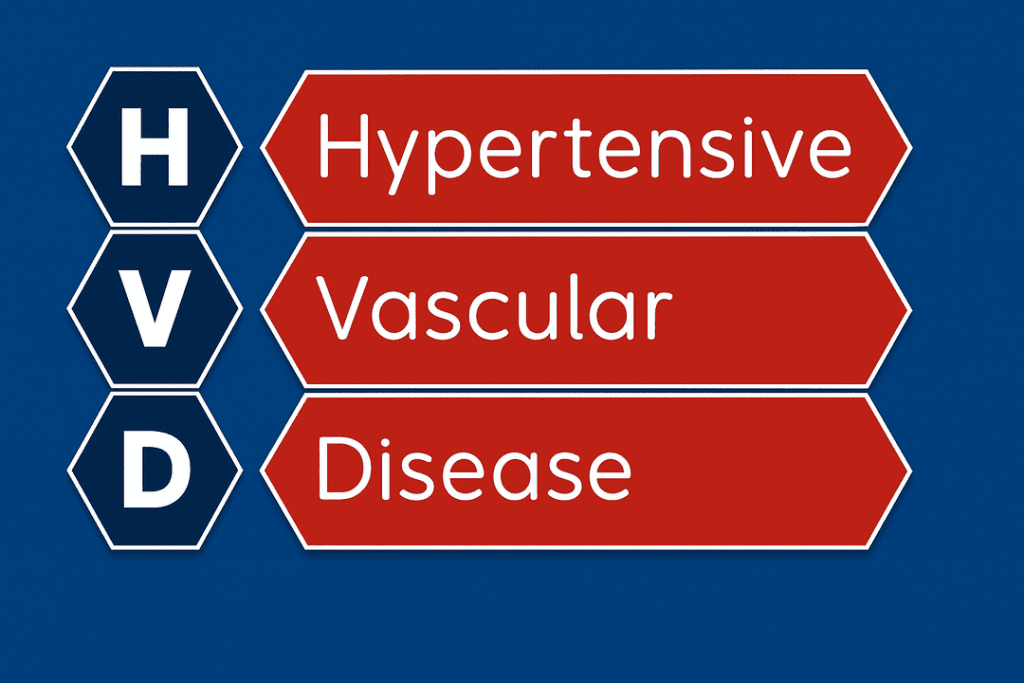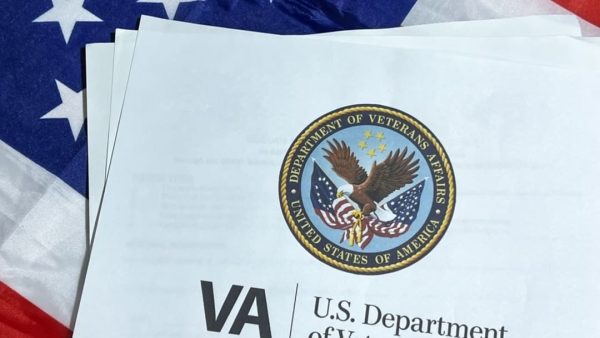Looking for Expert-Level VA Claim Answers?📱Call Us Now! 737-295-2226
Hypertensive vascular disease (HVD) is a serious condition that affects many veterans, especially those who’ve lived with high blood pressure for years without adequate treatment. If you’ve developed complications from hypertension, including heart or kidney problems, you may qualify for a hypertensive vascular disease VA rating.
Even though HVD is distinct from simple hypertension, the VA uses the same diagnostic code (DC 7101) to rate both conditions.
In this post, we’ll explain how the VA rates hypertensive vascular disease, how it relates to other vascular conditions like PAD and PVD, and what you need to know to get the benefits you’ve earned.
Table of Contents
Summary of Key Points
- Hypertensive Vascular Disease (HVD) develops as a result of long-term unmanaged hypertension (high blood pressure) and is rated under VA Diagnostic Code 7101, the same code used for hypertension.
- HVD may lead to serious cardiovascular complications such as heart attack, heart failure, stroke, and kidney damage.
- Peripheral Artery Disease (PAD) and Peripheral Vascular Disease (PVD) can result from or be worsened by HVD and may qualify for a secondary service connection.
- Veterans can only receive compensation for one condition if symptoms overlap.
Hypertension and Hypertensive Vascular Disease: What’s the Difference?

What is Hypertension?
Hypertension (high blood pressure) is a condition where the force of blood against your artery walls is consistently too high. On its own, hypertension may not cause noticeable symptoms, but over time, it puts strain on the heart and damages blood vessels.
What is Hypertensive Vascular Disease (HVD)?
Hypertensive Vascular Disease (HVD) is the result of long-term, unmanaged hypertension.
Hypertensive Vascular Disease is a group of clinical manifestations involving damage to the kidneys, eyes, and brain, depending on which blood vessels are damaged.
HVD causes damage to the heart and vascular system (i.e., veins, arteries, and the smallest blood vessels, called capillaries), most often impacting the smaller vessels, causing them to narrow, stiffen, and weaken, which can eventually lead to:
- Heart attack
- Heart failure
- Stroke
- Kidney damage
HVD Symptoms
Symptoms of hypertensive vascular disease include:
- Arrhythmias (irregular heartbeat)
- Pulmonary edema (fluid in the lungs)
- Cardiomegaly (an enlarged heart)
- Heart murmur (unusual heart sounds)
HVD, Peripheral Artery Disease (PAD), and Peripheral Vascular Disease (PVD)
Hypertensive vascular disease can cause or worsen peripheral vascular disease (PVD) and peripheral artery disease (PAD), diagnostic code (DC) 7114, which may be considered for secondary service connection.
PAD and PVD are conditions involving reduced blood flow in the blood vessels outside the brain and heart. This reduced blood flow is due to plaque buildup, which causes blockages. PAD involves blockages of the arteries, and the blockages in PVD occur in the veins.
Symptoms of PAD and PVD usually affect the legs, causing cramps or other, more severe complications when left untreated, such as gangrene.
Hypertension can exacerbate (i.e., worsen) PAD and PVD.
Did you know?
Veterans aren’t allowed to have ratings for conditions that cause similar symptoms; in other words, if you have hypertension, which caused HVD and or PAD/PVD, you can’t receive benefits from both disorders. You can only qualify for VA disability compensation for the condition that gives you the highest rating.
Hypertensive Vascular Disease VA Ratings
Using DC 7101, the VA rating for hypertensive vascular disease is 10%, 20%, 40%, or 60%, depending on your blood pressure control level.
| VA Disability Rating | Blood Pressure |
| 10% | Diastolic pressure is predominantly 100 or higher, (or) systolic pressure is predominantly 160 or higher (or) a history of diastolic pressure is predominantly 100 or higher, requiring continuous medication. |
| 20% | Diastolic pressure is predominantly 110 or higher (or) systolic pressure is predominantly 200 or higher. |
| 40% | Diastolic pressure is predominantly 120 or higher. |
| 60% | Diastolic pressure is predominantly 130 or higher. |
Note: The systolic blood pressure is the top number of the BP reading, indicating the pressure in the blood vessels when the heart contracts; the diastolic reading is the numeric reading when the heart is at rest. A healthy blood pressure reading is considered to be less than 120 systolic and less than 80 diastolic, which is written as 120/80.
Conclusion
If you’re living with the long-term effects of high blood pressure, hypertensive vascular disease could be impacting more than you realize. From heart damage to circulation issues, the VA may owe you monthly compensation. Understanding how HVD is rated—and how it may connect to other conditions like PAD or kidney disease—can help you get the benefits you deserve.
Related: How to Get a VA Disability Rating for Hypertension
Veterans: Want to Chat With a VA Claim Expert?
There’s no better time than today!
If you feel stuck, frustrated, or underrated by the VA, talk to our team now.
Book Your NO-OBLIGATION Discovery Call OR Dial Now: (281) 533-6777

- VA Claims Insider is the #1 most trusted name in VA disability claims.
- Work directly with a VA claims coach who can educate you to VA claim victory.
- 25,000+ disabled veterans have served in our membership programs since 2016.
- 30% average rating increase for veterans who complete our #1-rated Elite program.
- 4.7/5.0 average rating out of 5,500+ total reviews; over 4,500 5-star reviews.
FAQs | Frequently Asked Questions
Is hypertensive vascular disease the same as hypertension?
No. Hypertension refers to high blood pressure, while hypertensive vascular disease refers to the damage that high blood pressure causes over time, especially to the heart, kidneys, and blood vessels.
Can I get VA disability for hypertensive vascular disease and hypertension?
Not separately. If both are present and caused by the same underlying issue, the VA will assign one rating based on the more severe condition.
What diagnostic code does the VA use for hypertensive vascular disease?
The VA rates HVD under Diagnostic Code 7101, which is the same code used for hypertension.
Author

Kelly Olone
Kelly Olone is a military spouse who earned her degree in Psychology from Florida International University. After working in the non-profit sector for several years, she turned to her passion for writing. She aims to contribute to a better understanding of the valuable benefits that veterans deserve. As a mom, Kelly navigates the delicate balance between deadlines and bedtime stories with finesse.



